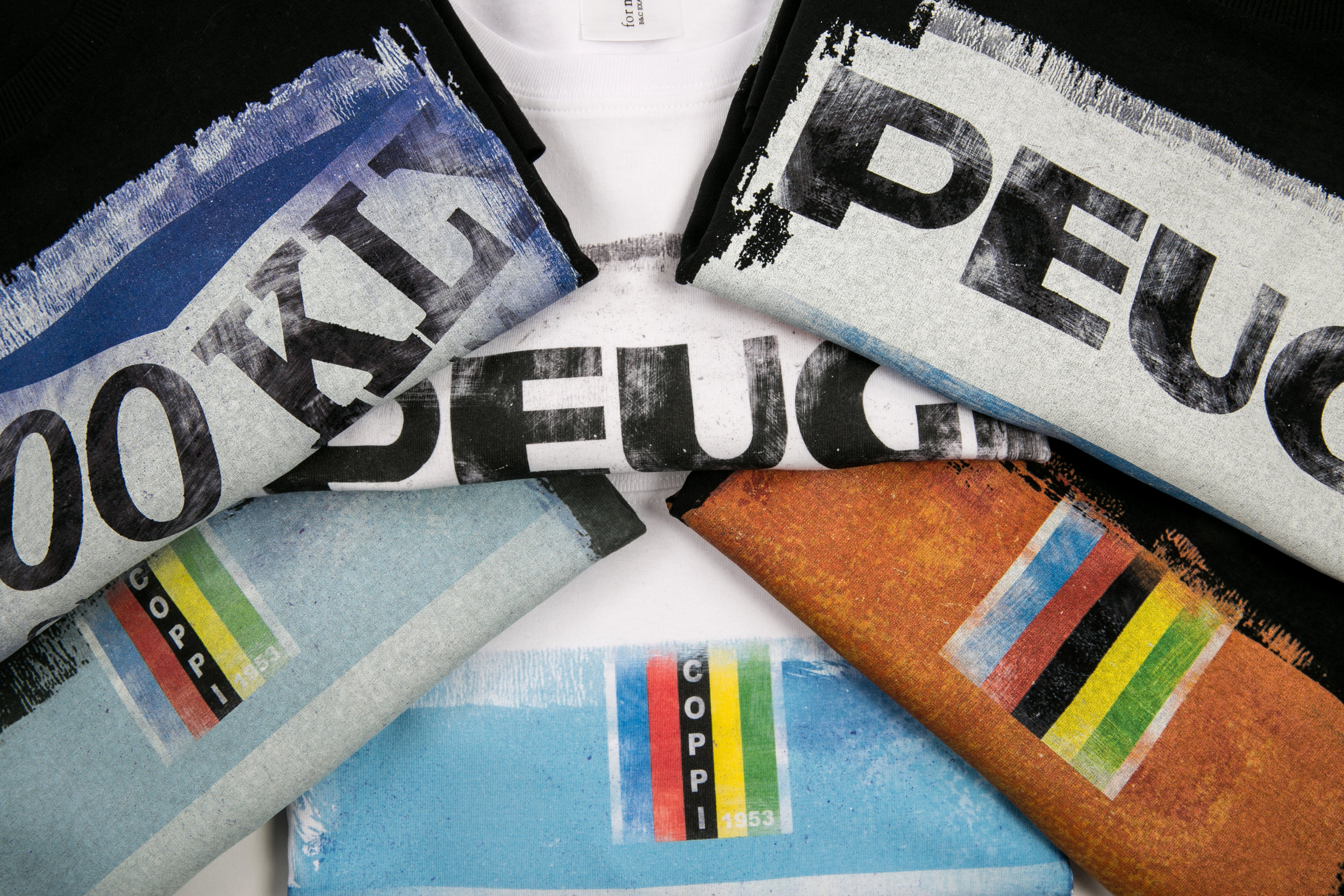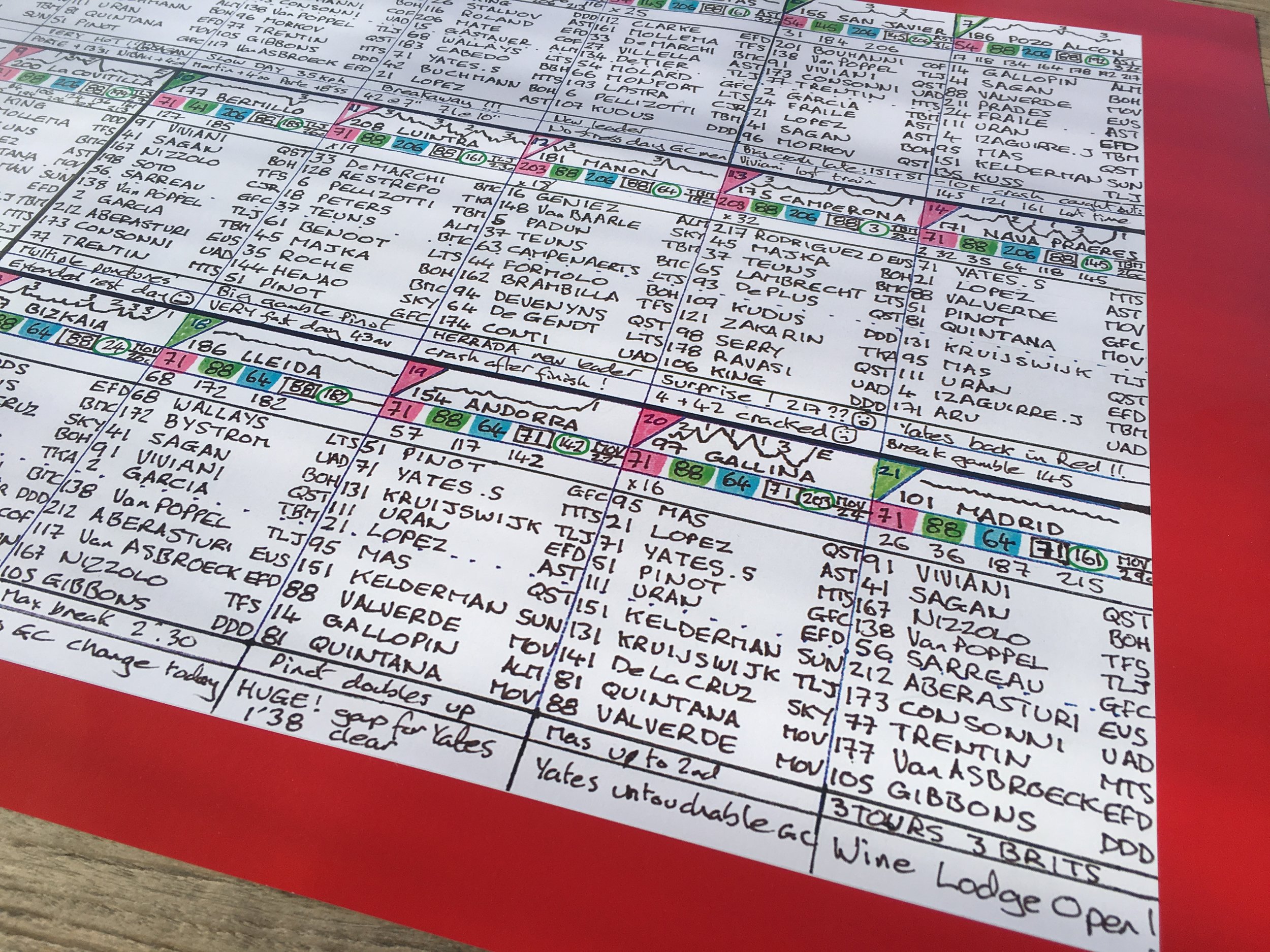By Mark Roberts
It’s every cyclist’s dream to ride the Tour de France. Ever since I was a kid riding a Raleigh Europa with drop handlebars and GTX brakes, it was definitely one of mine. I remember glorious summer evenings tuning into that day’s highlights of the Tour – to see the colourful peloton breezing along through glorious French countryside…past chateaux….past fields of beautiful sunflowers in perfect bloom – what I would have given to be part of it, sitting all day in the middle of the peloton only to make a burst for the finish line on the top of Alpe d’Huez…..
And so about 18 months ago it was with a mixture of excitement and trepidation that I came across an event called Le Loop. I think I had googled epic amateur cycling challenges…..Lands End John O’Groats (tick)……Marmotte (tick)……Etape du Tour (two ticks). And discovered that Le Loop was a charity cycling event that undertook the full Tour de France route of that particular year, with full logistical support and ridden exactly seven days before the professionals did the same. This looked too good to be true.
Le Loop has been going for about 10 years now. It was set up by the William Wates Memorial Trust to raise money to help disadvantaged children and, in particular, provide them with opportunities and projects that would keep them away from the problems of drugs, gangs and violence. William himself was a young man who was tragically killed whilst backpacking in South America; his family set up the Trust and Le Loop in his memory and to help others. Since its creation I think it has now raised over £1m and sponsored many different wonderful projects. I had very little hesitation in signing up and about 8 months later on a Saturday morning at the end of June 2018 I found myself with about 30 fellow crazy-minded fools on the start line in Noirmoutier with the small matter of about 3,200km of cycling ahead of us.
But what was riding the Tour de France actually like?
The most obvious thing to say is it’s tiring! I thought i’d trained pretty well and was in good shape on the start line. I think I knew I could survive when over Easter I did three century rides on consecutive days. But even then this was a big step up. In the first nine days, with the exception of Stage 3 which was a short team-time trial stage, each day was around 160-180km and stage 7 rocked in at a whopping 237km! After a few days the fatigue became quite deep and engrained – even the first rest day and a complete day off the bike did little for recovery. The other aspect which I hadn’t appreciated beforehand was the sheer mental fatigue – I know many people will scoff when I try to describe how mentally taxing riding your bike can be but it’s absolutely true – even doing relatively simple mental tasks at the end of each day became a real challenge.
Logistics were also problematic. Thankfully Le Loop is brilliantly organised and pretty much everything was taken care of but life still wasn’t easy. Most people think that the Tour finishes one afternoon in a pretty little town and starts there again about midday the day after. What people don’t see is that consecutive stages can be as much as a two hour drive apart. For us this often meant leaving our hotel at 6.30 in the morning (pro teams usually do the transfer straight after they have finished the stage) and if you then think we had to eat, pack and get ready before then, you quickly realise that your sleep is getting impinged upon! We soon got into a regular daily routine – wake up, get kitted up, eat as much as you could, sleep a bit more on the coach transfer to the start, ride all day, shower, massage, eat and then sleep. Thankfully sleep came easily most nights but with so much moving around and a new bed every night you can see why some pro teams have thought about sleeping in their own motorhomes!
Food glorious food! The best thing without doubt about the Tour is the amount of food you can eat and not even feel remotely guilty about it. In fact I doubt you could eat too much. We were blessed with four feed stops on each stage. The first feed stop was like a second breakfast, stop two was coffee and baguettes etc, stop three was lunch and often rice or pasta and the final stop was cans of ice cold fizzy drinks and chocolate bars. It was interesting observing how your system got used to devouring so many calories – one stage for me which felt much harder than I thought it should have done was probably down to not eating well enough immediately after the previous stage and not having a particularly good breakfast that morning. A mistake I didn’t make twice!
Injuries and niggles. I think everyone suffered with something or other at some point. Thankfully serious injuries were non-existent; I suffered with a really painful glute muscle for about three days in the first week which I eventually attributed to a slightly poor piece of bike set-up (pointing the saddle down about 1cm did the trick along with being regularly acquainted with a physio’s elbow). Along with a number of the rest of ‘the peloton’, I also suffered with painful and tingling toes. No-one really came up with a convincing answer for this other than wearing stiff carbon soled cycling shoes all day and our feet only being a few inches from tarmac that was often like a furnace from the French summer sunshine….
….and of course with over three weeks criss-crossing a whole country you can expect most types of weather. Our first week was generally baking hot, the Alps were glorious and the Pyrenees treated us to all day deluges in the way that only the Pyrenees seems capable of doing. Weather just added to stress – particularly when setting out being unsure of what to wear, what to carry etc.
And then there’s the terrain! We enjoyed the cobbled farmyard tracks of northern France, gravel tracks in the Alps, mountain passes frequented by cows and sheep who literally ‘peppered the route’ and not forgetting the mythical ‘Tour Tarmac’. I’ve heard it said many times that towns and villages are desperate to get on that year’s Tour route so they can get their roads re-surfaced and their hanging baskets refreshed. And with us riding a week before the main event, we often saw the tarmac lorries and steam rollers along the way. Indeed, I got a bit too close to ‘Tour Tarmac’ at one point in the Alps and was still picking bits of the black stuff off my tyres on the entry into Paris almost two weeks later!
And finally there’s the excitement of reaching Paris. I can’t tell you what a good feeling that was. Whizzing through the suburbs of the city before photos at Versailles and then the mandatory Eiffel Tower shot (but remember the rule of cycling that says bikes should never be lifted above your head!). After that it was a quick blast around the traditional finishing circuit, down through the underpass and then emerging back into the sunlight at one end of the Champs d’Elysees. I’ll never forget that look of excitement on all of our faces as we literally went full gas all the way up and down the most famous Avenue in the world mixing it up with Sunday afternoon Parisian traffic!
I think when people ask me what it was really like and what the best bits were then there were so many to choose from – riding by fields of sunflowers, tackling the cobbles near Roubaix, climbing Alpe d’Huez and I could go on and on. For me the best thing was the camaraderie and the friendships we developed as a group. We came together largely as strangers and by the end we were pretty much a professional cycling team – everyone looking out for each other, everyone taking their turn in the wind, sharing food and the occasional witty remark that kept us smiling through thick and thin. I also now have a cycling buddy in most places in the UK as well as a few strung out across the world. That to me was what riding the Tour de France was really like.








































